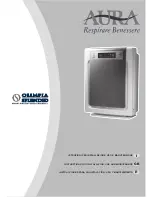
Super Free Match Series
20
8
Design of Drainage Pipeline
8.1
Installation of Drain Hose
1)
Choose one drain hole in the bottom of the outdoor unit.
2)
Connect the drain hose to the drain hole.
3)
The drain hose should be kept at 5~10 degrees of gradient to facilitate discharge of the
condensing water. Take care that does not exert too much force on the hose.
4)
Thermal insulation materials should be placed at the joints of the drain hose so as to prevent
from dew condensation. Fix the drain hose firmly by binding band.
Fig. 22
5)
The end of the drain hose should be inserted into the hole of drainage pipeline.
8.2
Design of Drainage Pipeline
1)
The drainage pipeline should be kept at a certain gradient (1/50—1/100) so as to avoid bulges
of pipes where there might be water bends.
2)
The drainage pipeline is form of the hard PVC pipes for common purposes which can be
purchased locally. The diameter of the PVC pipes is not less than 17mm (11/16inch) and the
pipeline should be fixed as close to the BU module as possible.
3)
Insert the drain hose into the drain hole of drainage pipeline. Use binding band to fix it tightly.
It is not allowed to use adhesive glue to join the drain hose to the drainage hole.
4)
When the drainage pipeline is laid for a couple of units, the position of the shared pipeline
should be approximately 100mm lower than the drainage hole of each module. In this case,
some special-purpose pipes with thicker walls will be used.
NOTICE!
At intervals of about 1 meter (3-1/4feet), fix the drain pipes to the wall with
brackets, not floating in the air.











































